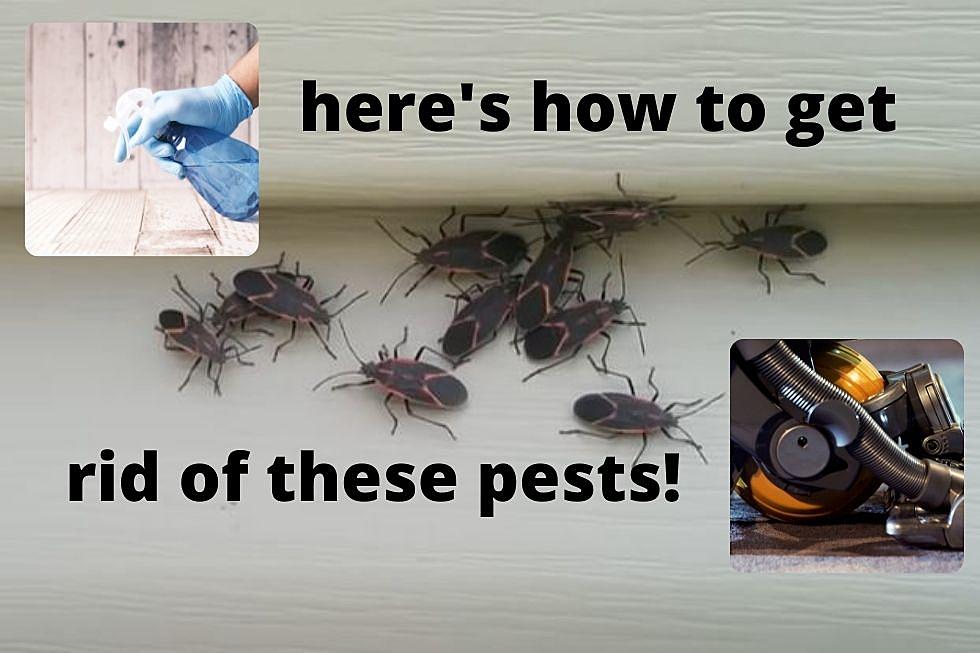
Beware Of These 6 Dangerous Invasive Pests And Plants In New York State
The New York Department of Environmental Conservation is warning residents about these 6 invasive pests and plants in the state. Two of them are on the federal quarantine list. The pests are dangerous to trees and other plants in New York and the plants are dangerous also, one can even burn you severely. If you see them you should contact the State Plant Health Director:
Eddie Chen
USDA, APHIS, PPQ
Phone: (518) 218-7510
Email: Edward.Chen@usda.gov
1. Asian Longhorned Beetle
The Asian Longhorned Beetle attacks hardwood trees and national forests. It is a threat to New York, Massachusetts, Ohio and South Carolina.
With no current cure, early identification and eradication are critical to its control. It threatens recreation and forest resources valued at billions of dollars. The ALB has the potential to cause more damage than Dutch elm disease, chestnut blight and gypsy moths combined, destroying millions of acres of America's treasured hardwoods, including national forests and backyard trees.
2. Giant Hogweed
The very invasive plant can cause painful burns and permanent scarring to the skin when touched. The DEC wants New Yorkers to know the risks of the very large, giant hogweed (Heracleum mantegazzianum). Simply brushing against the plant or breaking it causes the giant hogweed to release a sap that can cause severe burns when it is combined with sunlight and moisture. The burns can appear within 24 to 48 hours.
Giant hogweed is a Federally listed noxious weed and NYS law prohibits its possession with the intent to sell, import, purchase, transport, introduce or propagate.
3. European Gypsy Moth
The Lymantria dispar is a threat in the northeast, New York included. It will invade up to 300 plants but prefers 150 primary hosts.
The European Gypsy Moth, which is under quarantine in the United States, is a threat to trees and shrubs. It arrived in the U.S. in 1869.
This moth is a significant pest because the caterpillars have voracious appetites for more than 300 species of trees and shrubs, posing a danger to North America's forests. The caterpillars defoliate trees, leaving trees vulnerable to diseases and other pests and can eventually kill the tree.
4. Slender False Brome
Slender false brome (Brachypodium sylvaticum) may be difficult to identify because it appears similar to other grasses. It is one of the lesser known invasive terrestrial plant species in New York.
Slender false brome can outcompete existing vegetation including threatened and endangered species. It can even prevent tree seedling establishment. it can harm populations of mammals, insects, lizards and snakes and even song birds by altering food sources. This plant is self-fertilizing, can produce hundreds of seeds per plant and can tolerate a wide range of habitats.
5. Spotted Lanternfly
The Spotted Lanternfly attacks fruit, as well as ornamental and woody trees. The insect is Spotted Lanternfly is native to China and first arrived in the U.S. in 2014.
Spotted lanternfly feeds on a wide range of fruit, ornamental and woody trees, with tree-of-heaven being one of the preferred hosts. Spotted lanternflies are invasive and can be spread long distances by people who move infested material or items containing egg masses. If allowed to spread in the United States, this pest could seriously impact the country’s grape, orchard, and logging industries.
6. Hydrilla
Hydrilla is an aquatic invasive species from Asia. Its presence can damage not only the ecosystem but recreation and tourism, as well.
Hydrilla or "water thyme" (Hydrilla verticillata) is an aquatic plant from Asia that is one of the most difficult aquatic invasive species to control and eradicate in the United States. Infestations can have negative impacts on recreation, tourism, and aquatic ecosystems. It is a federally listed noxious weed which means that its movement between states and in foreign commerce is prohibited. It is a popular aquarium plant, but it was recently prohibited from sale or possession in New York State.

13 Biting And Stinging Insects In New York State
Bites From These 7 Creatures in New York Can Be Deadly
Gallery Credit: Yasmin Young
More From Zoey 103.9





